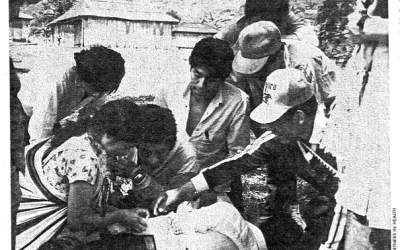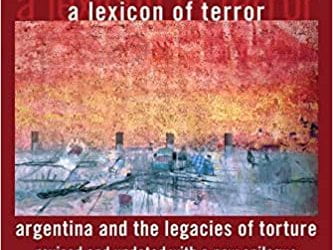Violence in Latin America
Violence–like most diseases–is caused by a complex network of factors,” said Rodrigo Guerrero, a medical doctor, researcher, and violence-prevention activist. “Our challenge is to understand as many of those factors as possible, plan some interventions to address them, try them out, and see what we learn.” In short, Guerrero is trying to figure out the epidemiology of violence and then do something about it.
Developing such a strategy was one of the main themes of a two-day conference organized by the David Rockefeller Center in February on violence and violence prevention in Latin America. It was an intense mingling of Harvard and outside communities with the objective of linking serious research from different disciplines to address the growing waves of violence in many Latin American cities.
Harvard faculty included professors from anthropology and social medicine, business and law, public policy and public health, and education and economics. Those from outside Harvard were just as diverse a group: from North, South, and Central America, theorists and practitioners, those who had endured the sound of whizzing bullets in Cali, Colombia, and those who had suffered the same sounds on the streets of Roxbury, Massachusetts.
The conference entitled “Violence in Latin America: Policy Implications from Studies on the Attitudes and Costs of Violence” was co-sponsored by DRCLAS, the Pan American Health Organization (PAHO), the Inter-American Development Bank, the William and Flora Hewlett Foundation, and the Rockefeller Foundation. Actively participating were also representatives from the World Bank and United Nations organizations.
The first study, commissioned by PAHO, examined the attitudes and cultural norms that cause people to be violent. The ACTIVA study, an acronym for Attitude and Cultural Study on Violence, compiled interviews from a sample of 10,821 people in eight Latin American cities. It attempted to measure attitudes such as aggression and to determine risk factors that make people act in a violent fashion.
The second study on the Magnitude and Costs of Violence was sponsored by the Inter-American Development Bank. The investigation attempted to provide a systematic analysis of the magnitude and scope of the problem of violence, examining both its direct and indirect costs.
“From both of these studies, you will have opportunities to discuss the implications for designing policy and effective interventions,” Harvard Provost Harvey Fineberg told participants at the outset of the conference. “You will hear from Harvard faculty members about their own work on violence and violence prevention. This includes exploring the use of media in creative ways to change attitudes and behaviors toward violence; comprehensive, community-based violence-prevention initiatives in urban centers here in the US; and innovative strategies building partnerships for violence prevention.”
For example, for more than 20 years the Harvard Medical School and the Harvard School of Public Health have collaborated in a number of community health development projects co-directed by Drs. Rodrigo Guerrero from Cali, Colombia and Dieter Koch-Weser from the Harvard Medical School. These initiatives have now evolved into a new initiative with Guerrero, Koch-Weser and Ron Slaby from the Graduate School of Education working together to develop a school-based violence prevention project in Cali.
The two-day conference also provided for a dynamic and interactive exchange of opinions and experiences, as well as an informative presentation of the data in the two studies.
“Violence is a learned behavior process,” observed Alberto Concha-Eastman, an epidemiologist from Cali who was part of the InterAmerican Development Bank’s study team. “It is not inevitable: it is preventable and avoidable.”
“But violence in Latin America is not just about domestic abuse or family problems, it is also about political instability, civil wars, impunity, corruption, lack of social control, drug traffic and many other factors,” warned Concha-Eastman, who was a Santo Domingo Visiting Scholar at DRCLAS during the fall semester.
Harvard Professor of Anthropology David Maybury-Lewis and PAHO Director of Research Alberto Pelligrini chaired the panel on “Study of Attitudes and Cultural Norms about Violence (ACTIVA).” DRCLAS Director John Coatsworth chaired the session on “Study of the Magnitude and Costs of Violence.”
Speakers and respondents covered a wide area of disciplines, ranging from Arthur Kleinman, Head of Harvard’s Department of Social Medicine, to Roger Fisher, negotiation specialist and Harvard Law School Professor emeritus, to Rodney Dailey, a former gang member and founder of Gang Peace in Roxbury.
“Violence has emerged in recent years as a major obstacle to social and economic development in the Americas. It is a human tragedy of rapidly growing dimensions, that is increasingly moving across traditional boundaries,” observed Provost Fineberg.
“On a more hopeful note, we are also learning that some violence prevention initiatives and policies do work. Well-developed and evaluated interventions have been proven successful both here in U.S. and in other countries-so there is much to share and much to learn. This conference is a attempt to create a space for serious dialogue across disciplines with both researchers and practitioners doing important work on this problem.”
Spring 1998
Related Articles
Partners In Health
Partners In Health is a Harvard-linked program committed to improving health in poor communities. Its goal is to make a “preferential option for the poor in health care” by working with community…
A Lexicon of Terror
How can one narrate the unspeakable? The unimaginable, the horror? This question is always raised when one talks about testimonies and tales of holocausts. Both history and literary…
Human Rights and Health in Latin America
Anthropologists, involved as we are with trying to understand the lives of people within their local worlds must be poignantly aware of the growing pauperization of the world and of the…




